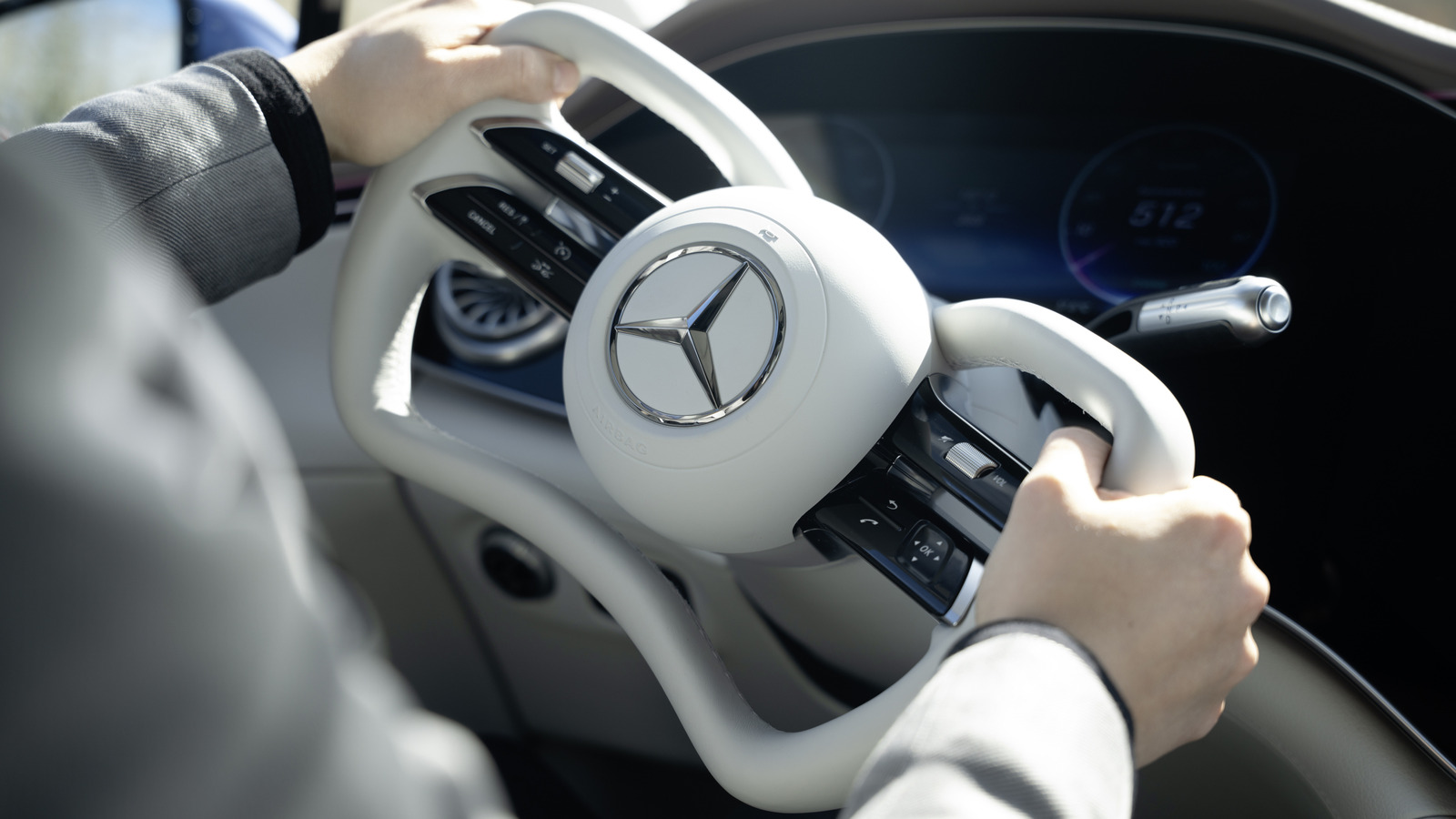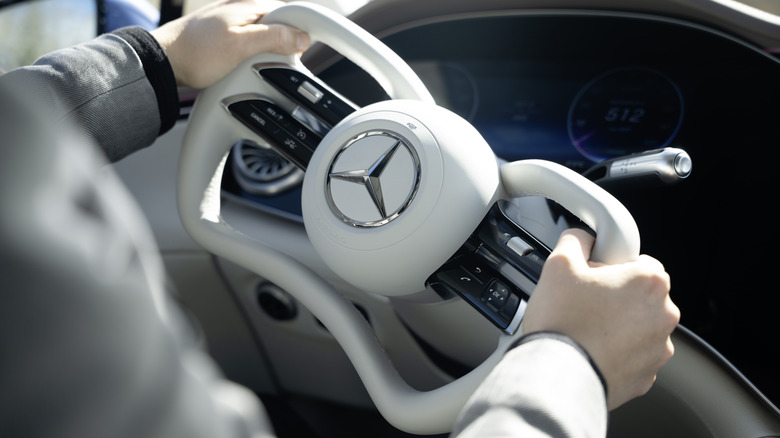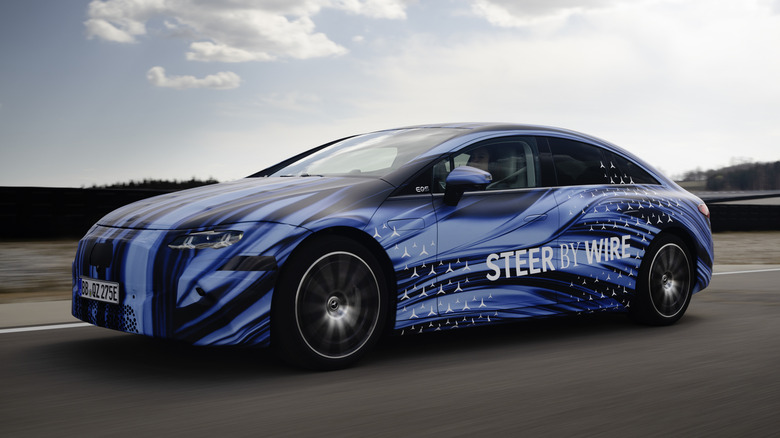Yokes are so hot right now, folks. Mercedes-Benz is the latest automaker to join in on replacing a traditional steering wheel with a yoke and a steer-by-wire system. The system will replace the mechanical connection between the steering wheel and front wheels with an electronic connection in the upcoming EQS facelift.
Because the wheel will no longer need to be spun through multiple revolutions, Mercedes has decided to scrap the traditional wheel altogether. It now looks like something similar to what you’ll find in a steer-by-wire-equipped Lexus RZ or the Tesla Model S/X (though the Teslas don’t have true steer-by-wire). The German automaker says the new “wheel” design frees up knee room and makes it easier for the driver to get in and out. It also provides a better, unobscured view of the gauge cluster display. Mercedes-Benz says the new setup will allow for a new, even more relaxed driving position.
Steering toward a new future
The steering ratio is able to be adapted depending on the situation. That means engineers wanted the car — either the new EQS or S-Class — to feel right whether you’re driving in a sporty setting or looking for all-out comfort. In a comfort situation, the fact the system filters out uneven road surfaces and rough pavement is sure to be a welcome addition for big sedan drivers. It’s also meant to increase directional stability and lateral agility, according to Mercedes-Benz. A big part of that comes from the rear-axle steering (which can rotate up to 10 degrees in either direction in the EQS).
“Steer-by-wire is another big step towards the mobility of tomorrow, and we’re proud that we will be launching such a system in 2026, Markus Schäfer, a member of the automaker’s board of management and its chief tech officer, said in a statement. “The technology enables a unique customer experience that goes far beyond steering alone.”
Mercedes-Benz says the new system has already completed over 1 million kilometers on test benches and nearly as much distance at its proving grounds and in real-world traffic. The automaker says it relies on a redundant system architecture in addition to high-precision sensors and high-performance control units. What that basically means is that there are two signal paths and twice the number of actuators than are actually required. MB clearly wants customers to feel secure when using the new and slightly unusual system.




